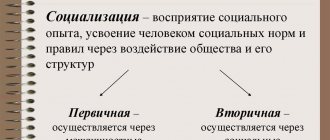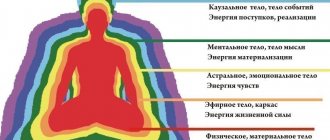Pain and fear are accepted by the human body as an abnormal condition. The feeling of danger that arises in this case triggers an innate mechanism - the instinct of self-preservation. This is one of the basic innate forms of behavior, forcing the body to unconsciously seek means of protection and salvation.
Markers of the instinct of self-preservation
What is the instinct of self-preservation (IS)
An exact definition for one of the main reactions of the body has not been recorded. All living beings receive it at the moment of birth. Both people and animals, under the influence of the activation of this mechanism, make attempts to save their lives at any cost.
Attention! When a danger arises, real or imaginary, a hormone called adrenaline is released into the human blood, which helps to increase the speed of the body’s reactions and its mobilization.
Adrenaline in a dangerous situation very quickly conveys information to the brain and allows you to instantly respond to external aggression.
The biological nature of IS triggering can be of two types:
- unconscious;
- deliberate.
The unconscious response to achieve self-preservation causes people to commit unconscious actions. For example, a man ran, not yet having figured out where to go and what would happen next. The desire to be away from danger makes him take off. This condition sometimes provides the opportunity to get into a more difficult situation. For example, in a state of panic, trying to escape from an attacker, a person gets hit by a car.
A conscious response is characterized by a preliminary understanding of the current situation. In this case, options for exiting a threatening situation are considered, and the safest one is selected.
Important! Well-developed intuition brings enormous benefits. In moments of danger, when the adrenaline rush requires a quick decision, and there is little information for reflection, a person’s intuitive actions may be the only correct ones.
Self-harming behavior
If teenagers cut themselves - on the arms and legs, sometimes on the stomach, often very neatly, symmetrically, as if to admire them - this indicates a difficult internal state, when a person is inclined to express his internal tension and emotions literally - through the body .
Sometimes teenagers describe it this way: “To drown out the inner pain, I need to inflict physical pain on myself,” “I wish I wasn’t—I feel unbearable, I don’t know what’s happening to me.” Cuts, by the way, are more common in girls. Boys have a different reaction to internal pain - they fight, splash out their aggression outward. Girls are usually given the message that they can’t fight, that a girl must be decent, so they hurt themselves.
Cutting does not always indicate a suicide attempt. Often this is an exploration of pain, an exploration of your body. But cuts are always a reason to contact a specialist and find out how dangerous the situation is!
How it manifests itself
Human motivation - what is it?
Before giving examples of self-preservation inherent in man, it is necessary to consider in more detail the forms of its manifestation. The main initial driving force of IS is fear for one's own life. It can manifest itself under the influence of the following factors:
- hunger or thirst - the body can die from a lack of one or the other, a person must constantly take care of food;
- hypothermia or overheating - the need to create conditions suitable for life for the body forces people to build homes, provide themselves with clothing and protect the body from excess temperature;
- illness - in order to protect itself from loss of life as a result of various diseases, humanity has invented and is developing medicine; an individual, feeling unwell, is treated;
- war or external aggression force people to arm themselves, learn self-defense techniques, and call on strangers for help to help them stay alive.
All these actions aimed at survival are embedded in the subconscious and can be performed automatically without the involvement of consciousness.
Law of self-preservation
Risks of inadequate heart rate
First of all, among the risks, it is worth talking about humiliation. With a low sense of self-esteem, a person allows himself to be humiliated, and with an overestimated sense of self-esteem, he humiliates other people. Naturally, this deteriorates relationships with others. In addition, with an overestimated heart rate, a person suffers from resentment, disappointment, and frustration. If it is underestimated, it takes the role of a victim, suffers from self-flagellation, failure and unhappiness in life.
Surely you are familiar with this evaluation system: “This is below my dignity” / “I am not worthy of this.” However, both of these statements can be either adequate or inadequate. It all depends on the context. But the situation is further aggravated by the difference in interpretation of who a “worthy person” is. There is no single measure of human dignity. Therefore, you should focus on the beliefs and values of a particular society, reference group and your own internal attitudes. Some define dignity by social status, others by level of intelligence, others by socially useful deeds, and others take into account all three components or name a fourth criterion.
Self-esteem also comes with responsibility. Namely, the responsibility for maintaining one’s dignity and avoiding actions that deprive one of self-respect. The borderline of the affected CSD is shame and guilt. A blow to self-esteem and shame from what happened is a common reason for victims to remain silent about rape and beatings. Some people are especially vulnerable; even everyday troubles can hurt their dignity. The result is the same - shame, humiliation, isolation. And if the values that determine self-esteem differ from person to person, from culture to culture and from society to society, then the shame of loss of dignity is inevitable for everyone.
The difference between human and animal instinct
Human Alter Ego - what is it?
Man is a mammal that has all the primal instincts. The desire to survive at any cost puts him on the same level as other animals. In contrast, people can sacrifice their own lives to save others. One can give many examples of a person’s self-sacrifice for the sake of others: an officer covered a grenade with himself and saved the soldiers standing around, the pilot did not eject, but pulled the burning plane beyond the city limits and died. Animals sacrifice themselves for the sake of their offspring, but will never do it for the sake of others.
The feat of Alexander Matrosov
Self-preservation of an adult
Humanity has been acquiring survival skills since the days of the wild. This knowledge in the form of the experience of generations was aimed at only one goal - to survive in conditions unsuitable for life. An adult also needs such types of manifestations of self-preservation as:
- the ability to reproduce - finding a partner for procreation and creating a family to raise offspring;
- migration is a change of place of residence (region, country, continent) in order to find the most suitable place for existence and reproduction.
Human cognitive abilities - what is it?
Any person is a social being, and the sense of self-preservation as a concept can have a figurative meaning. With the help of such a definition, the mechanism of adaptation of an individual in society can be described when he tries to protect himself from trauma of a psychological and emotional nature. Behind this concept is also the choice of a social stratum, social or state system, associated with personal (spiritual) security.
Attention! An adult, based on studying his personality, can develop those qualities that strengthen IP: physical, mental, psychological and other useful skills.
Raising his social status, fighting for power and gaining it, the individual also acts following this instinct.
Self-preservation instinct in women
A woman, as a reproductive being and directly related to the birth of a person, has an increased IP. She must save herself for the birth of a child, and then in order to feed him. After the birth of offspring, a woman’s instinct of self-preservation is suppressed or almost completely suppressed by the instinct of protecting her children.
By the way. Women's sacrifices for the sake of preserving family relationships in the form of tolerance for domestic violence or a drunkard husband have nothing to do with the instinct of self-preservation.
Self-preservation instinct in a child
Immediately after the child is born, he screams. This is the need to fill the lungs with air in order to breathe. The baby doesn’t yet know how to survive, but he knows that he must live. Therefore, everything that is outside is dangerous. Bright light, loud sound, an incomprehensible situation cause fear, which he cannot cope with on his own and requires help.
Important! Children have an instinct, but it is not sufficiently adapted to the environment due to a lack of information about possible dangers.
The little man does not know what can threaten his life and what cannot. The kids are climbing everywhere: on a wobbly chair, on a hot iron, trying to jump off the sofa. The baby does not know the clear boundaries of permitted actions. Adults must help him in this knowledge. The human subconscious is designed in such a way that it puts clear marks on two events: pain and pleasure. If the body has ever experienced pain after some rash action, the subconscious will record it forever.
It is necessary to note the negative events that happen to the baby and reinforce this with the phrases: “it’s not hot, it’s not allowed,” “it’s painful is not allowed,” and so on. Here the child, reaching for something, looks questioningly and waits for the adult’s reaction. Further, having gained experience and showing intelligence, the baby tries to avoid trouble.
IS in children
Infrasound receivers. (Part four)
Published: 01/24/2019
Tuning fork infrasound information receivers. Tuning fork receivers are monolithic or composite stone structures with specified resonant properties. These receivers do not have air resonators. They are installed in places where the infrasound signal is concentrated on inhomogeneities in the propagation medium, as well as near large mound receivers. They made it possible to receive infrasonic energy on the surface of a stone or concentrate it at a given point (cromlech). Figured ones are stone infrasound receivers (colossi), made in the form of sculptures or large stones on stone stands. They were installed in places of worship and near temples. Cromlechs are a set of menhirs installed in a ring for in-phase amplification of the infrasound signal. Menhirs are single vertical stones, Read more…
What problems might there be with IP?
The main difficulties with the self-preservation instinct (IP) may consist of the following positions:
- pathology;
- increase in IP;
- IP reduction;
- perversion.
The innate sense of self-preservation can only have problems in the case of some pathology of the nervous system. This manifests itself even in infancy, when the child does not remove his hands from a hot object or does not feel pain when struck. Slow reactions or their complete absence can lead to the baby becoming accustomed to pain or not feeling it at all and dying. If such a situation arises, you should immediately consult a doctor.
An increase in IS manifests itself in fear of the novelty of a situation, objects or environment, a violation of the usual course of things. Often such reactions are unmotivated and are accompanied by severe agitation or inhibition. It has been noted that early autism and neuropathy in children are manifested by an increase in IS.
Important! The lack of necessary information or its incorrect interpretation can lead to panic reactions, as a result of which the threat to life only increases.
A heightened sense of self-preservation can be harmful. For example, it happens that a person, afraid to fly on an airplane, does not have time or does not get to the right place at all. As a result, they miss the opportunity to improve their quality of life.
Absence, disturbance or suppression of feelings
A decrease in IP is accompanied by human actions that increase the risk to his health and life in general. This manifests itself in such moments as:
- alcohol, drug and tobacco abuse;
- casual sex (unprotected sex);
- lack of self-control when receiving dubious pleasures;
- demonstration of “fearlessness” under the influence of bad company;
- doing extreme sports without insurance.
This can also include uncontrolled aggression and loss of fear. Such deformations of the sense of self-preservation are possible due to psychological trauma suffered in childhood or prolonged stress.
Lack of IP among drug addicts
Perversion of IP is accompanied by directed aggression (hostile actions) against oneself. As a result of this, a person inflicts injuries on himself, mutilates himself, and attempts to commit suicide. Sometimes such a person has masochistic tendencies.
How to develop the instinct of self-preservation
Developing the self-preservation reflex is not only possible, but also necessary. To work on increasing it, you need to act in three directions:
- develop the body - training physical endurance and general strengthening of the body, studying methods of survival in the wild, practicing martial arts;
- improve the mind - setting the right life priorities, awareness of one’s own actions in dangerous situations, their preliminary modeling and development of defense;
- increase intuition - learn to hear the warnings of the subconscious, read the signs given by the universe about danger.
Flexible thinking, good physical fitness, development of intuitive and other skills significantly increase the likelihood of surviving in a difficult situation.
Self defense school
The instinct of self-preservation, inherent in nature and working normally, does not interfere with life, on the contrary, it improves the quality and duration of life. If for some reason the fear for existence decreases or increases, you must definitely pay attention to this.
Criticism
K. Lorenz expressed skepticism about the existence of the instinct of self-preservation as an independent biological impulse:
The activity of an organism, which can be named by its function - nutrition, reproduction, or even self-preservation - is, of course, never the result of only one single cause or one single impulse. Therefore, the value of such concepts as the “instinct of reproduction” or the “instinct of self-preservation” is as insignificant as the value of the concept of some special “automotive force”, which I could just as rightly introduce to explain the fact that my old the good car still drives... Anyone who is familiar with pathological violations of innate mechanisms of behavior - we call these mechanisms instincts - will never think that animals, and even people, are guided by some guiding factors that are understandable only from the point of view of the final result , but are not amenable to causal explanation and do not need it. Behavior that is uniform in terms of function - for example, feeding or reproduction - is always due to a very complex interaction of many physiological causes.
> See also
- Attraction to life
- Suicide
- Apoptosis









